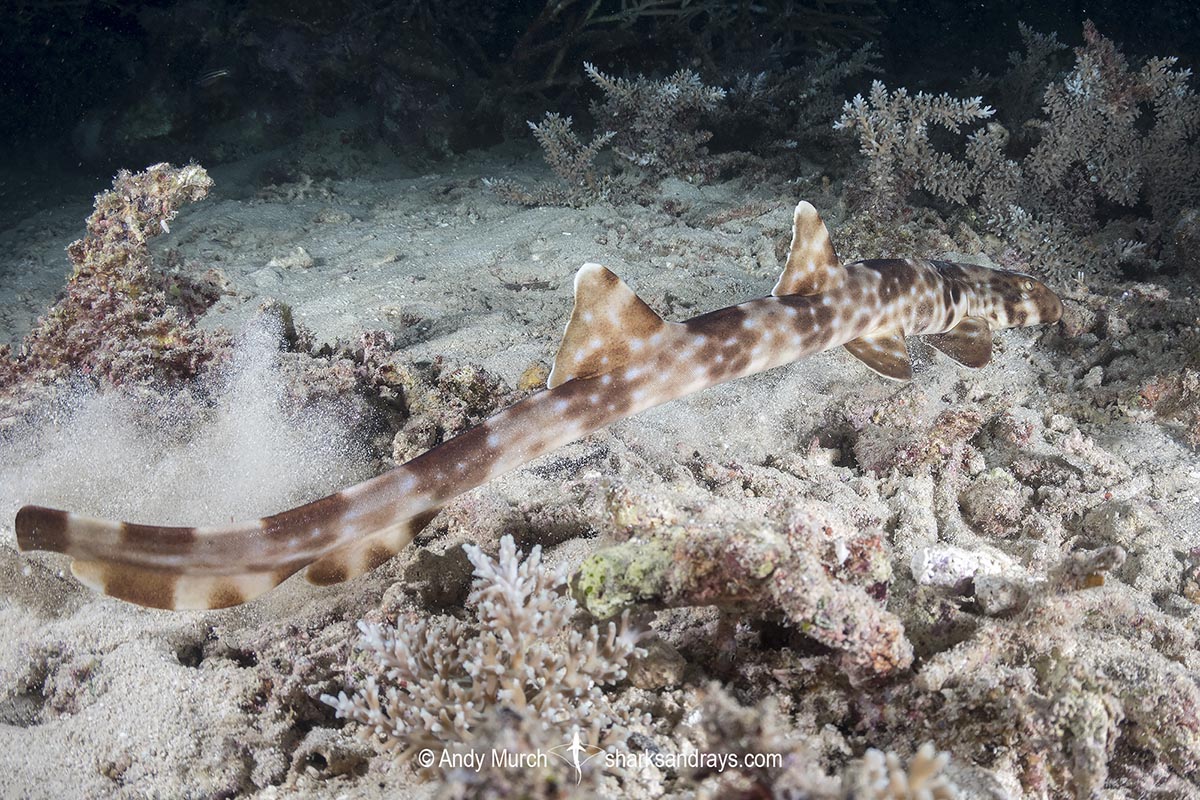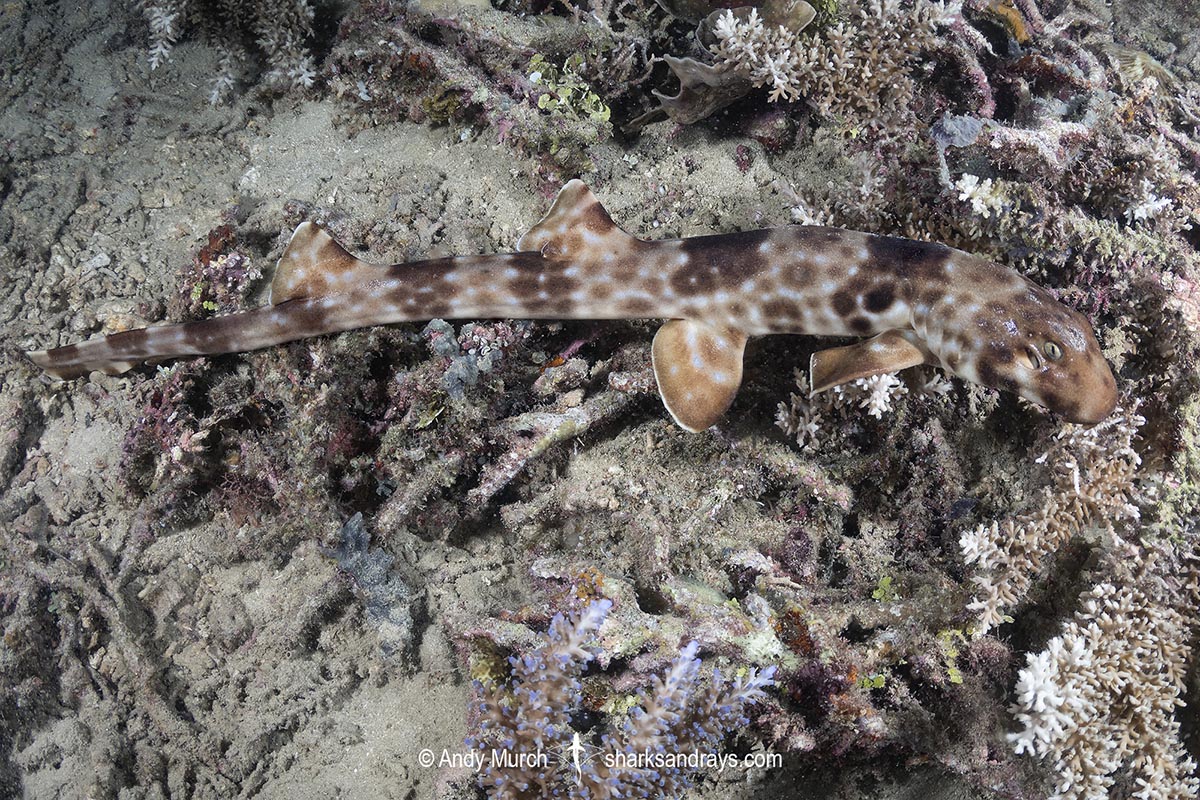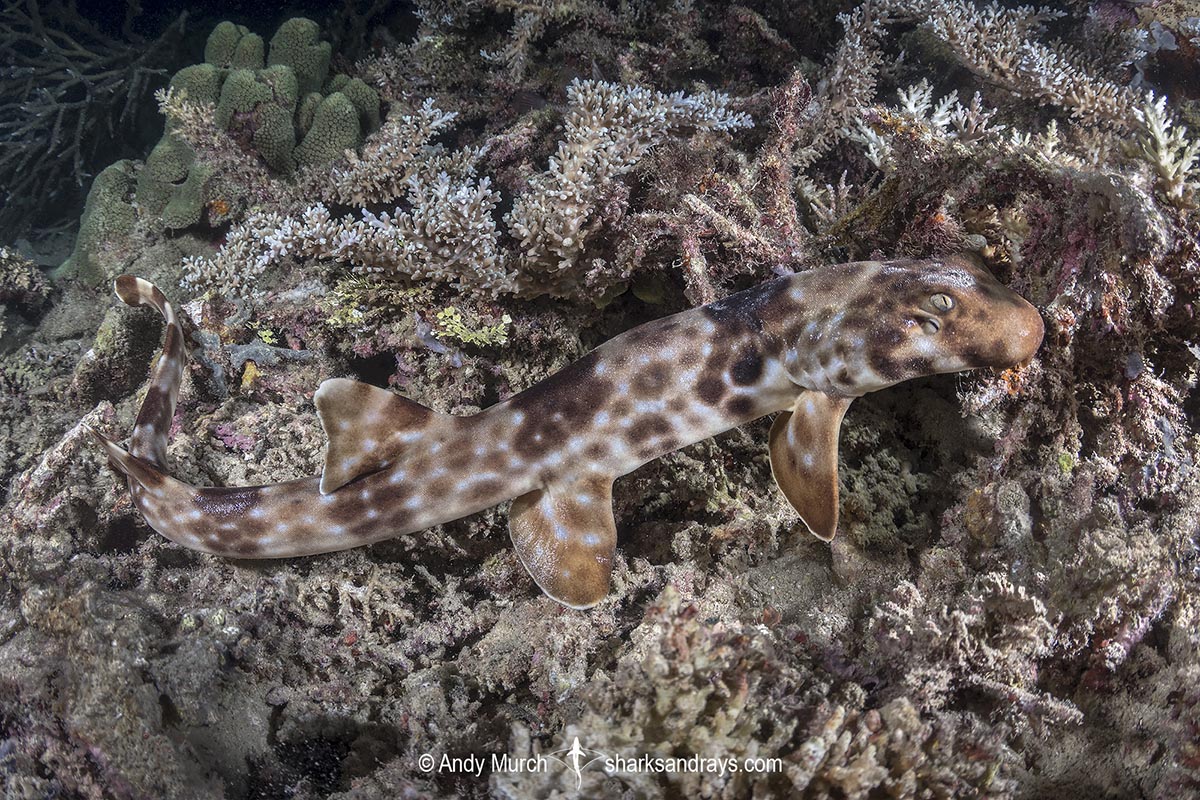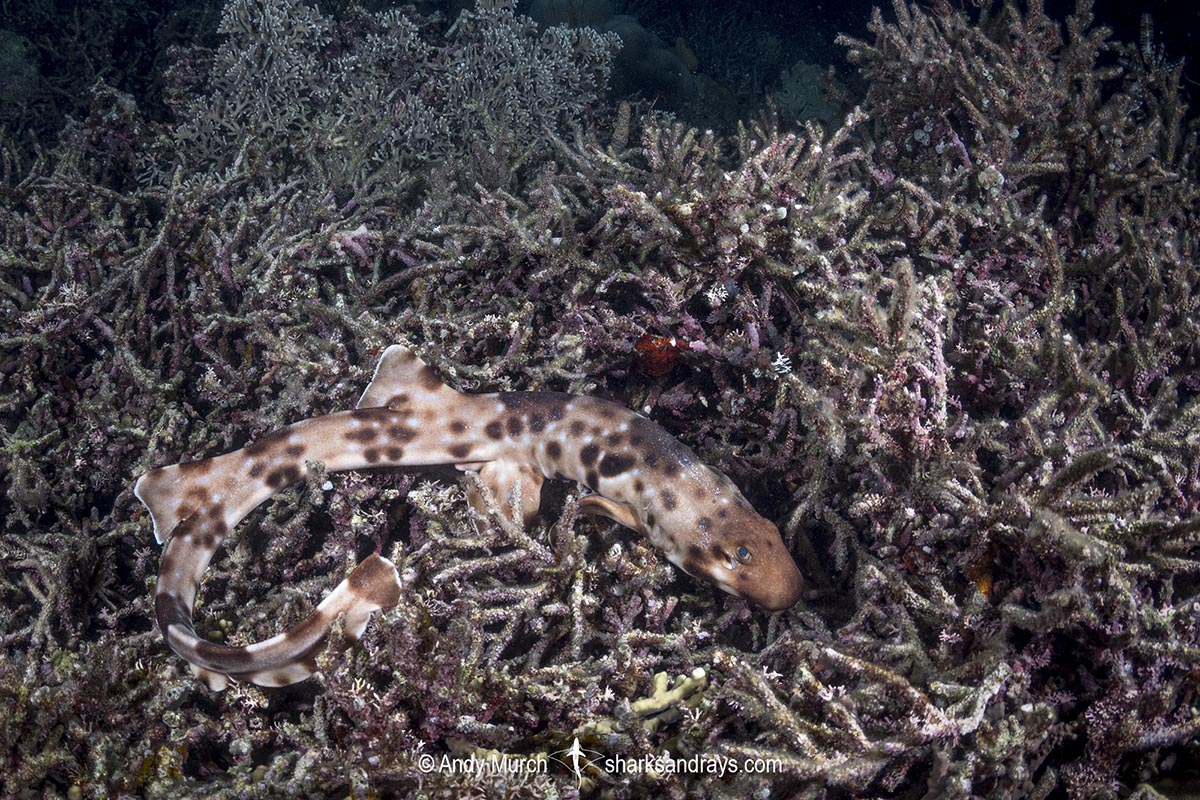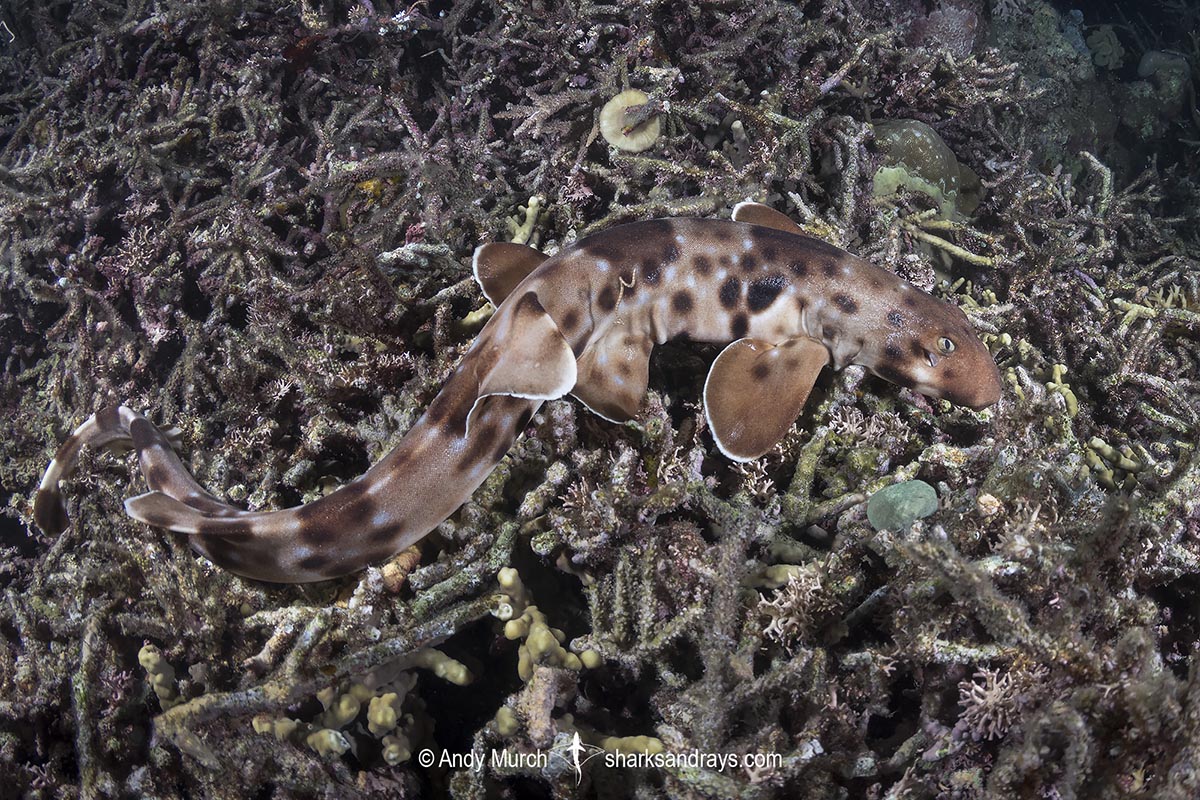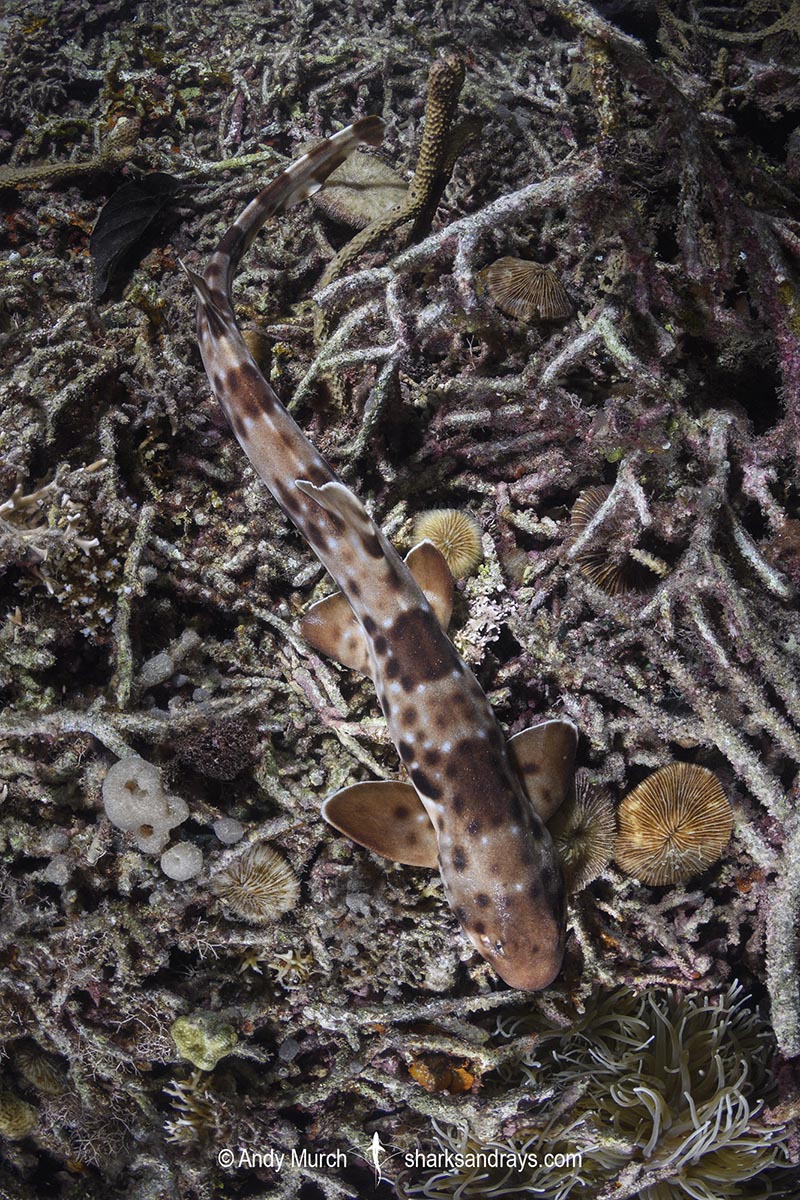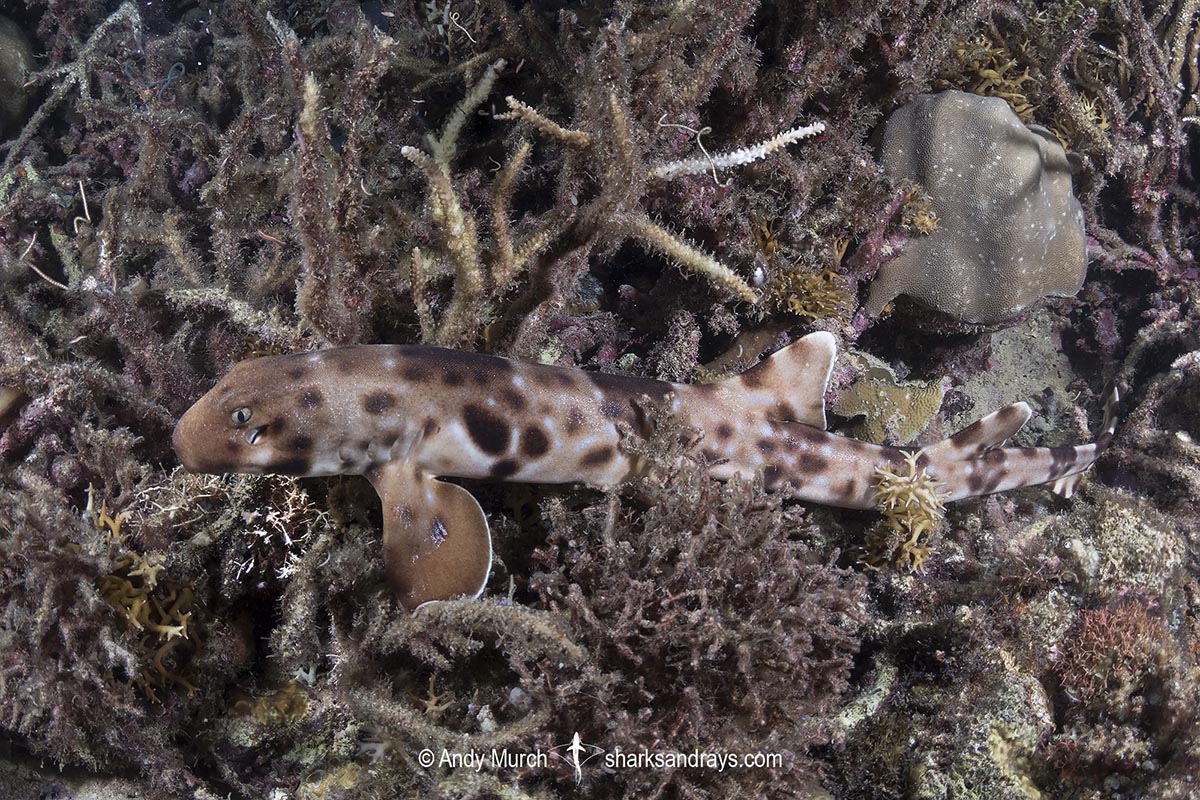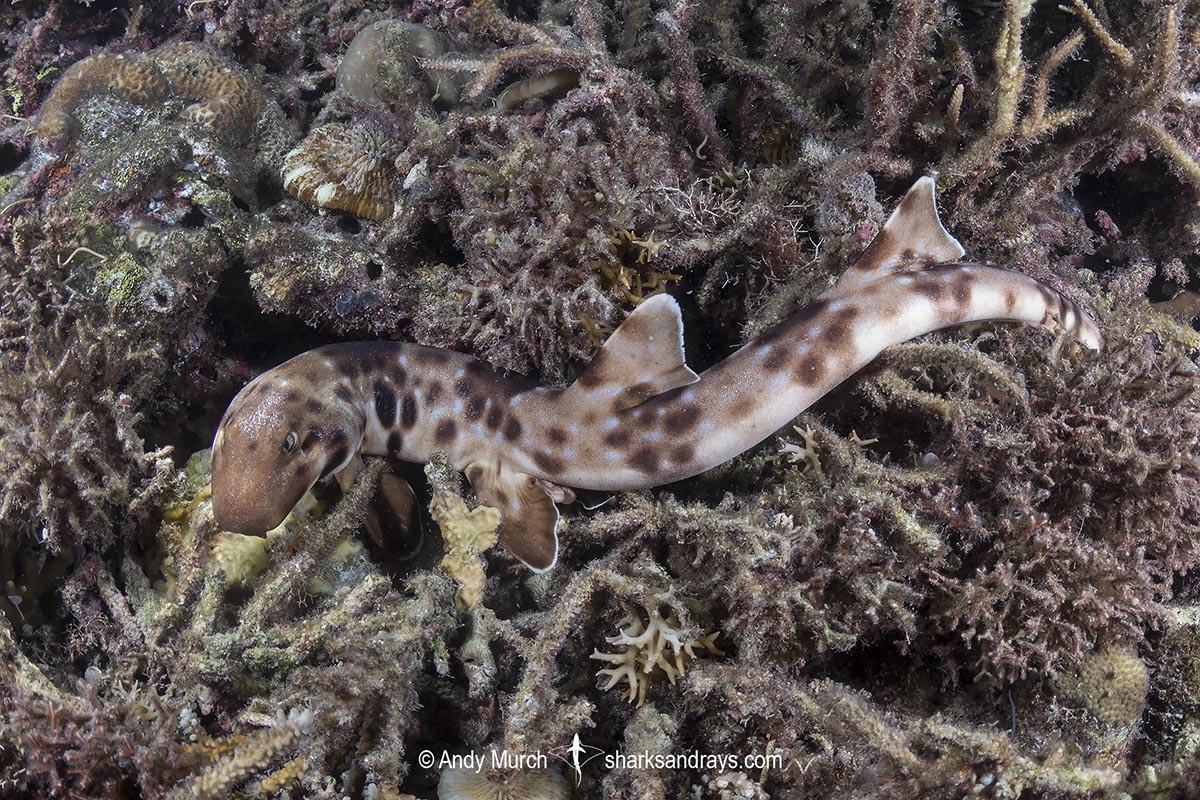Common names
Halmahera Epaulette Shark, Halmahera Walking Shark.
Binomial
Hemiscyllium halmahera.
Synonyms
None.
Identification
Elongated, slender body. Well developed pectoral and pelvic fins on fore-body (used partially for walking). Two equally sized dorsal fins on rear-body. Tail long and straight with upper and lower caudal lobes on underside. Sub-terminal notch present.
Dorsal coloration tan to reddish brown with concentrations of dark spots forming broken bands along the torso and tail. Three large dark spots behind gills; the largest being elongated or U shaped and partially outlined in white on the lower side. Head orange-brown with small dark spots on nose and forehead. Two larger dark spots on lower cheeks. Ventrum pale.
Size
Maximum confirmed length 79cm but probably attains greater length (personal observation).

Conservation Status
NEAR THREATENED
The Halmahera Epaulette Shark (Hemiscyllium halmahera) is directly targeted for consumption by artisanal fishermen across much of its range. It is collected by hand, using hand spear on intertidal reef flats, and hand-line fishing. It is also collected for the aquarium trade.
Heavy metal pollution from strip mining and reef degradation from dynamite fishing and climate change; warm-water coral reefs are projected to suffer significant losses of area and local extinctions, even if global warming is limited to 1.5ºC.

Habitat
Shallow tropical coral reefs, rocky outcrops, and seagrass beds. From 0 to 10m.
Distribution
Endemic to the Maluku Islands in north-central Indonesia. Found near Ternate Island and Halmahera Island.
Reproduction
Oviparous. Reproductive cycle poorly known.
Diet
Unknown. Probably benthic invertebrates.
Behavior
Nocturnal. Hides by day under corals venturing out at sunset to feed. Swims or ‘walks’ along on its flexible pectoral and pelvic fins. Wriggles through gaps in coral in search of prey or to seek protection.
Reaction to divers
Seeks cover when caught in a diver’s spotlight. Some animals are more tolerant of diver’s lights than others.
Diving logistics
The Halmahera epaulette shark can only be seen at the Maluku Islands. The dive masters at Weda Resort on Halmahera Island have a good track record for finding this species, which they call Walking Sharks.
In May of 2018, we encountered multiple sharks on two out of three night dives. Epaulette sharks do not migrate so they should be reasonably easy to find year round.

